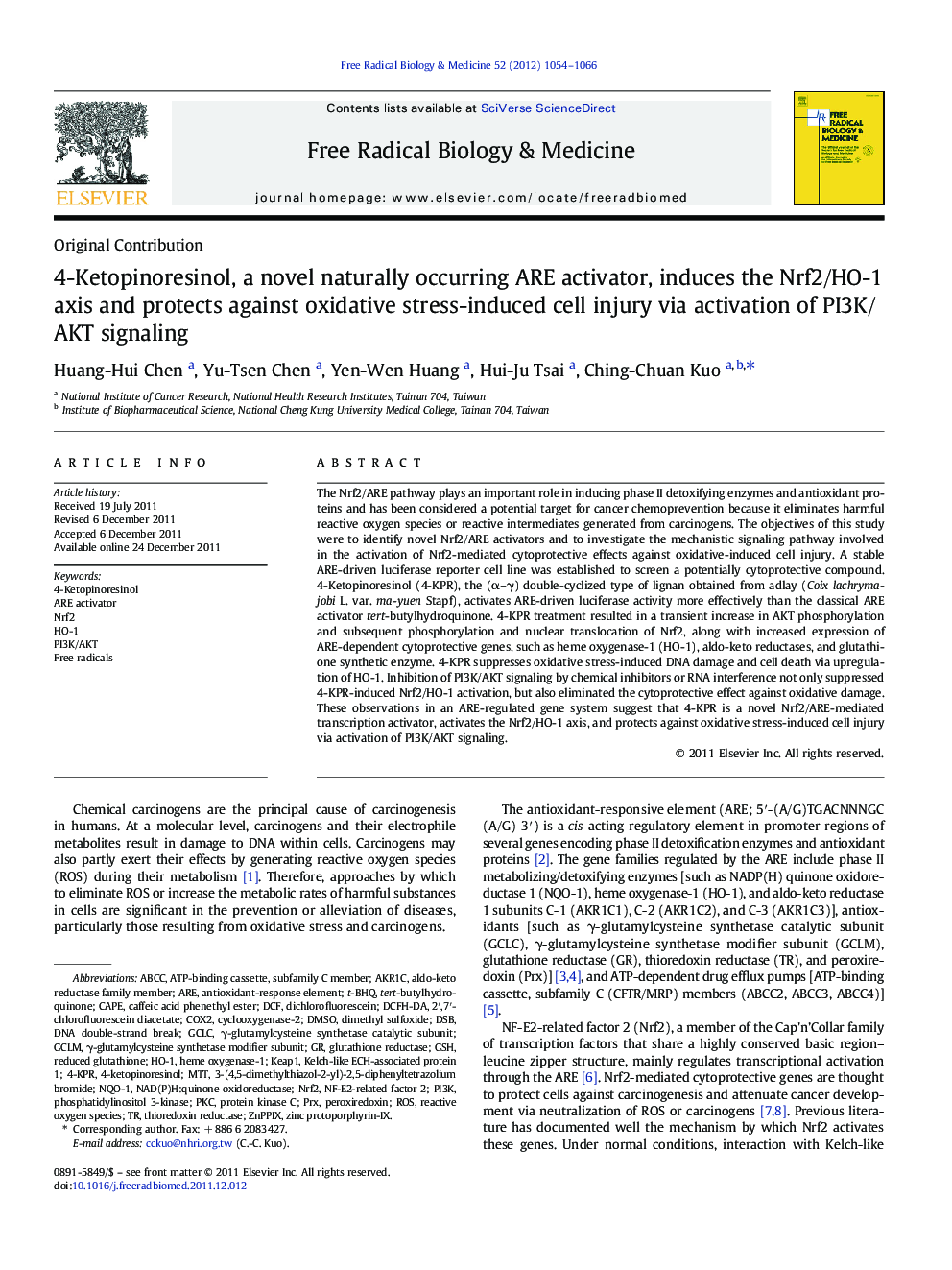| کد مقاله | کد نشریه | سال انتشار | مقاله انگلیسی | نسخه تمام متن |
|---|---|---|---|---|
| 1909092 | 1046699 | 2012 | 13 صفحه PDF | دانلود رایگان |

The Nrf2/ARE pathway plays an important role in inducing phase II detoxifying enzymes and antioxidant proteins and has been considered a potential target for cancer chemoprevention because it eliminates harmful reactive oxygen species or reactive intermediates generated from carcinogens. The objectives of this study were to identify novel Nrf2/ARE activators and to investigate the mechanistic signaling pathway involved in the activation of Nrf2-mediated cytoprotective effects against oxidative-induced cell injury. A stable ARE-driven luciferase reporter cell line was established to screen a potentially cytoprotective compound. 4-Ketopinoresinol (4-KPR), the (α–γ) double-cyclized type of lignan obtained from adlay (Coix lachryma-jobi L. var. ma-yuen Stapf), activates ARE-driven luciferase activity more effectively than the classical ARE activator tert-butylhydroquinone. 4-KPR treatment resulted in a transient increase in AKT phosphorylation and subsequent phosphorylation and nuclear translocation of Nrf2, along with increased expression of ARE-dependent cytoprotective genes, such as heme oxygenase-1 (HO-1), aldo-keto reductases, and glutathione synthetic enzyme. 4-KPR suppresses oxidative stress-induced DNA damage and cell death via upregulation of HO-1. Inhibition of PI3K/AKT signaling by chemical inhibitors or RNA interference not only suppressed 4-KPR-induced Nrf2/HO-1 activation, but also eliminated the cytoprotective effect against oxidative damage. These observations in an ARE-regulated gene system suggest that 4-KPR is a novel Nrf2/ARE-mediated transcription activator, activates the Nrf2/HO-1 axis, and protects against oxidative stress-induced cell injury via activation of PI3K/AKT signaling.
Figure optionsDownload high-quality image (177 K)Download as PowerPoint slideHighlights
► 4-Ketopinoresinol (4-KPR), the (α–γ) double-cyclized type of lignan, is a novel Nrf2/ARE-mediated transcription activator.
► 4-KPR suppresses oxidative stress-induced DNA damage and cell death via the Nrf2/HO-1 axis.
► 4-KPR induces Nrf2/HO-1-mediated cytoprotective effects against oxidative damage via PI3K/AKT signaling.
Journal: Free Radical Biology and Medicine - Volume 52, Issue 6, 15 March 2012, Pages 1054–1066